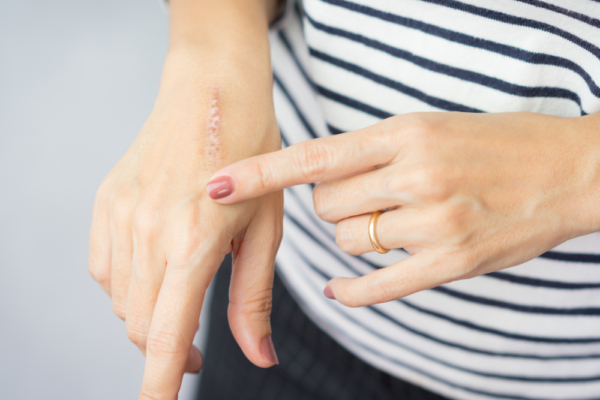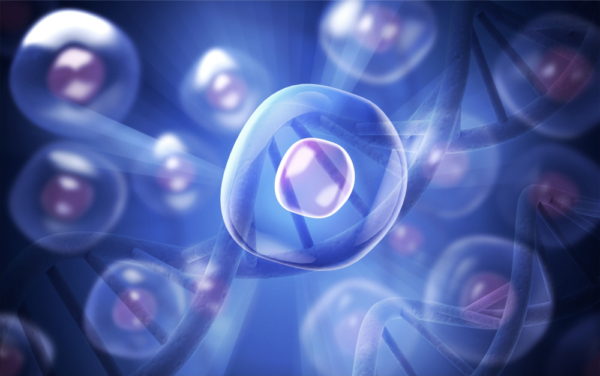The truth is that we live in an ocean of infarred radiation but can be using it in a way that s flawed. And we have little in the way of tools to check with.
we are told to go out in the sun, but that is broad band exposure and may well not be ideal.
what this tells me is that an infrarred emiter at home is an option that needs to be figured out.
how about augmenting our lighting technology? We mastered white light and adding specific infrarred radiation may just be doable while been a huge boon to lighting sales.
We also need to understand biological radiation in the first place.
Infrared Light for Pain, Inflammation, and Accelerated Healing
New research and devices open up new therapeutic applications of this century-old treatment
Aug 3 2023
biggersmaller
Natural light is a natural component of health and well-being.
It isn’t so hard to understand the healing power of light when we think about its most abundant source—the sun. Without the sun, virtually every living thing on this planet would perish.
The sun’s nourishing rays offer several health benefits. Our bodies need sunlight to make vitamin D3, which is vital for supporting the immune system and reducing inflammation. Exposure to the sun’s UVB rays also allows our skin to create beta-endorphins that we need to reduce pain, help heal wounds, boost the immune system, and relieve symptoms of depression.
Using light as a healing therapy dates back to 1903, when Niels Ryberg Finsen won a Nobel Prize in physiology in “recognition of his contribution to the treatment of diseases, especially lupus vulgaris, with concentrated light radiation, whereby he has opened a new avenue for medical science.” His work substantially impacted medicine, and light therapy has been used ever since.
(Mila Drumeva/Shutterstock)
“The use of light as therapy is exemplified by its use in the San Sydney Adventist Hospital in Sydney Australia, where light therapy was introduced in 1903 (after Dr. John Harvey Kellogg visited Niels Finsen in Denmark) and is practiced by nurses, physiotherapists, and doctors until the present day,” notes a narrative review published in Physiotherapy Theory and Practice in 2021.
The discovery of lasers in the 1960s represented a new way to use light to promote healing. A report published in the Annals of Biomedical Engineering in 2012 states that red low-level laser light is used predominantly in three ways, “to reduce inflammation, edema, and chronic joint disorders; to promote healing of wounds, deeper tissues, and nerves; and to treat neurological disorders and pain.”
There are many names for light therapy and many different types of light therapy, including low-level light therapy, light box therapy, biostimulation, phototherapy, cold laser therapy, and photonic stimulation.
The name most often used in the scientific community is photobiomodulation, or PBM.
Photobiomodulation involves using red or near-infrared light at low power densities to benefit cells or tissues. According to an article published in Photochemistry and Photobiology, PBM therapy is used to “reduce pain, inflammation, and edema [swelling] and to regenerate damaged tissues such as wounds, bones, and tendons.”
A review article defines photobiomodulation as “the use of red or near-infrared light to stimulate, heal, regenerate, and protect tissue that has either been injured, is degenerating, or else is at risk of dying.” The article reviewed the effectiveness of using PBM in disorders of the brain.
Infrared Light for Pain
One of the most common applications of infrared light therapy is for pain.
A double-blind, placebo-controlled trial (pdf) investigated the effects of infrared (IR) therapy in patients suffering from musculoskeletal low back pain who were attending a pain management clinic. The IR therapy group showed a progressive decline in pain levels of approximately 50 percent, which was more significant toward the end of the six-week study period.
(Natali Brillianata/Shutterstock)
The study authors state, “This was highly significant both by within-group comparison and compared with the placebo group.” The study concluded that infrared therapy “clearly demonstrated that it is easy to use, safe and effective, and reduced chronic back pain by 50% over six weeks.”
Infrared Light for Inflammation
Because inflammation is implicated in many chronic diseases, doctors, researchers, and scientists are eager to explore new ways to decrease its harmful effects.
An article in AIMS Biophysics published in 2017 states that “One of the most reproducible effects of PBM is an overall reduction in inflammation, which is particularly important for disorders of the joints, traumatic injuries, lung disorders, and in the brain.” The article concluded that the use of red and near-infrared light has been shown to “reduce inflammation in the brain, abdominal fat, wounds, lungs, spinal cord.”
Infrared Light for Accelerated Healing
One study in Photodermatology, Photoimmunology, and Photomedicine published in 2009 demonstrated that using infrared light could induce healing at a cellular or molecular level.
The researchers observed that “low-level exposure to 980 nm of laser light can accelerate cell growth in a wound healing model.”
“Because our measurements were obtained from an in vitro cell culture model, these results also suggest that the mechanisms involved in the acceleration of cell growth following laser exposure are cellular or molecular in nature.”
(myboys.me/Shutterstock)
Light therapy is also being used to improve wound healing in diabetics.
A review in The Scientific World Journal states that phototherapy has shown a vast improvement in wound healing in those with diabetes. It continues, saying that at the correct laser parameters, phototherapy has an anti-inflammatory and protective effect on diabetic cells, and there is a stimulatory effect on the mitochondria with a resulting increase in adenosine triphosphate (ATP).
Infrared Light for Disorders of the Brain
Another application for infrared light therapy is in disorders of the brain.
A review article published in BBA Clinical looked at several studies exploring photobiomodulation for brain disorders. It states that near-infrared light can penetrate the head to reach the brain and is absorbed by the mitochondria resulting in increased blood flow, energy, neuroprotection, decreased inflammation, and brain repair. The review also states photobiomodulation could be used to treat stroke, traumatic brain injury, Alzheimer’s, Parkinson’s, psychiatric diseases like anxiety and depression, and may also offer cognitive enhancement in healthy people.
The review concluded, “Many investigators believe that PBM for brain disorders will become one of the most important medical applications of light therapy in the coming years and decades. Despite the efforts of ‘Big Pharma,’ prescription drugs for psychiatric disorders are not generally regarded very highly (either by the medical profession or by the public), and many of these drugs perform little better than placebos in different trials, and moreover can also have major side-effects.”
What is Red and Infrared Light Therapy?
Red light and infrared therapy are different—and are often confused.
Infrared light represents part of the electromagnetic spectrum that is not visible to the human eye. It has wavelengths slightly longer than visible red light and can penetrate deeper into the body.
Red light therapy uses light in the visible spectrum. It has slightly shorter wavelengths, and is visible to the human eye. Red light therapy only penetrates superficially and is used primarily for skin conditions and hair regrowth.
Infrared is often divided into three spectral regions—near, mid, and far-infrared. Each has a different wavelength and has unique clinical applications.
Jim Ohneck, CEO of Epoch Lasers, has spent the last twenty years developing laser light technology, and his present high-powered therapeutic laser is now in its fourth generation. He explains why the type of infrared light is important.
“There are categories of infrared light, and they all work differently. They may have the same cellular level results in some respects, in that infrared light in those areas will stimulate the mitochondria, but they all are absorbed differently by the tissues,” he told The Epoch Times.
“Because of that, some are more effective than others. The difference is how it treats the body, which is important.”
How Light Works in Healing
Several studies about photobiomodulation discuss the way light affects our physiology.
Light elicits a healing response in the body through its absorption by chromophores in our cell’s mitochondria, which accelerate the production of ATP or adenosine triphosphate.
One of ATP’s various functions is to help support healing in the body. Any decrease in the availability of ATP negatively impacts every aspect of the healing process, according to a study published in 2022 titled “Intracellular ATP Delivery Causes Rapid Tissue Regeneration via Upregulation of Cytokines, Chemokines, and Stem Cells.”
(Billion Photos/Shutterstock)
A review analyzing the effects of light therapy on wound healing in diabetic patients explains that laser light is absorbed by chromophores in the cell—mitochondria in the case of visible red light—which leads to an increase in adenosine triphosphate, reactive oxygen species, nitric oxide, and intracellular calcium. These increases ultimately result in increased cell survival and wound healing.
Another review discussing the mechanisms involved in photobiomodulation explains that “the first law of photobiology states that photons of light must be absorbed by some molecule (called a chromophore) located within the tissue to have a biological effect.” One of the principal chromophores responsible for the beneficial effects of PBM is located inside our mitochondria.
Final Thoughts
In 2022, a poll of two-thousand adults revealed that one in three Americans take over-the-counter pain medication every day, and 12 percent reported taking pain medications “a few times a day.” Even with those numbers, respondents seemed more interested in avoiding pain, with fifty-seven percent saying they preferred a preventative approach versus 15 percent who said they reacted to the pain after it had already begun.
With the use of pain medications reaching epidemic proportions, red and infrared light therapy is a safe alternative with minimal risk.
For anyone else who may be struggling with health challenges and looking for a more natural solution that is low-risk, infrared-light therapy might be a great option. Just be sure to find a specialist that can help you find the right type, frequency, and intensity for your particular condition.





No comments:
Post a Comment